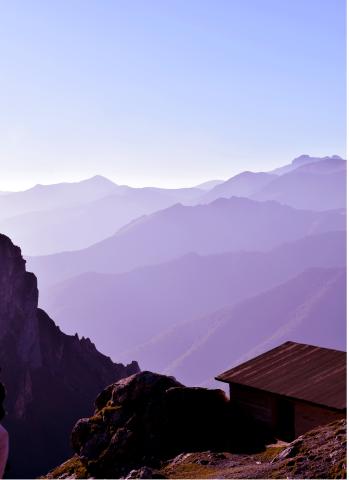Before I left for Madrid, I made of list of things I wanted to do in Europe. One of those was a scenic hike. When most people imagine hiking in Europe, the first places that come to mind are Switzerland, Germany, Northern Europe, etc. When it comes to hiking specifically in Spain, the most popular routes are the various parts of the Camino de Santiago. I had my eyes on the Tour de Mont Blanc, a beautiful and popular route through the Alps that passes over the borders of Switzerland, Italy and France. Unfortunately, it was too cold when I was planning to go, and most parts of the route were shut down. My next option, the Black Forest in Germany was way too pricey to get to. I was ready to give up on my hiking plans, when I discovered the Picos de Europa. Spending 5 days going from town to town in the Picos and all over Northern Spain was easily one of the best parts of my semester. It’s the perfect hike for students in Spain who are there during the off-season but still want an awesome nature experience. The whole trip was relatively cheap, but it was difficult to plan. Information about transportation is hard to find online, and there aren’t many resources or guides available since the national park has tons different routes and small villages to travel between. Here’s what my roommate and I came up with:
Step 1: Bus from Madrid to Torrelavega. You can get pretty cheap tickets online, and it’s a nice small city to spend a few hours in.
Step 2: There is a large area called Potes right next to the national park that has a local bus running back and forth between Torrelavega. The city offers a beautiful peek at the towering mountains and is a perfect pit stop to spend the night before a long hike.
Step 3: From Potes, we took a taxi to Fuente De. There is a bus that makes the same trip, but the timings aren’t posted online anywhere and it doesn't run year-long. Luckily, there were four of us splitting the ride so it ended up costing as much as the bus would have any way.
Step 4: Fuente De offers a cable car that runs from the base site all the way up to the top of one of the mountains. As you can imagine, there are some pretty awesome views from to top. I definitely recommend making the trip up, even if you’re riding back down after.
Step 5: After an amazing cable car ride, we began our hike. The first leg is between Fuente De and Posada de Valdeón. The actual route is only 14 miles, but with all the detours and places to explore, it takes longer than expected. The trail is filled with cows roaming freely, and it’s fairly unpopular so it really feels like you have the park to yourself.
Step 6: We spent the night in Posada de Valdeón in one of the two hostels. It’s a small village with one or two restaurants, the hostels and a church. Make sure you try to local food and stop by the stables to see the horses.
Step 7: The next hike is much more popular than the first. It’s a long winding trail to Caín that takes you through the Cares Gorge, a breathtaking path. It’s a small trail carved into the side of the gorge that’s packed with visitors most of the year. Look over your right shoulder and you’ll see tons of goats as well as a terrifying drop into the river below.
Step 8: After the second long hike, we took a taxi out of the national park into Las Arenas. We stayed there for a night and got to practice our Spanish when we met several locals living in the small town.
Step 9: After Las Arenas, we took a bus to San Vicente de la Barquera, a beautiful red brick city overlooking a bay. There’s a castle in the center that has an amazing view when you climb all the way to the top.
Step 10: We ended our trip in Santander, a beautiful and surprisingly modern city on the northern tip of Spain. The city has great pinchos and even greater beaches, and is a great place to visit



Krish Shethia
<p>Industrial Engineering major from Penn State with minimal Spanish skills, finding my way through Madrid. I love to read, write, eat, and take pictures.</p>








